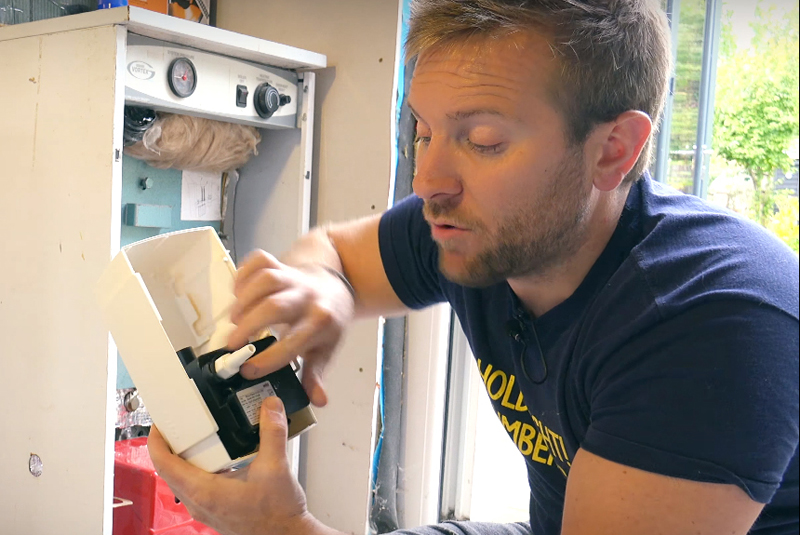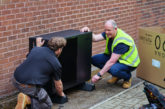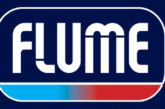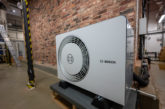
Wilo explains the serious problems that acidic condensate can cause, and why installers should look to fit a condensate pump to combat the issues.
Millions of litres of condensate generated by condensing boilers is being discharged to either the sewage system or into soakaways around the UK. With more than 50% of us getting our drinking water from boreholes, should we be more concerned about the amount of this acidic discharge that is finding its way underground?
There seems to have been a very small amount of interest in this issue, although we are now seeing the arrival of condensate pumps with many installations. This has resulted in much of the acidic discharge being neutralised in one way or another, which might suggest at least an underlying concern regarding the amount of condensate we’re generating.
The pH of condensate from a boiler is typically between 2.9 and 4. Many are unaware of the problems this can cause, and this misunderstanding is thought to have given rise to a reasonable number of inappropriate installations, which could eventually result in serious damage to the structure of properties. The reality is that most boilers produce acidic condensates, with gas boiler condensate containing nitric acid and oil boiler condensate containing a mixture of nitric and sulphuric acids. Such acids will eventually dissolve lime-based mortar.
Containment
Condensate discharge must, therefore, be contained and channelled out of the house, through the correct drainage system. Due to the acidity, many people suggest that copper and mild steel pipes cannot be used for this application. It is also generally recognised that under no circumstances should boiler condensate be put straight to ground or down the side of buildings without first being neutralised.
“What is the size of the problem? We know that the condensate generated by the growing numbers of condensing boilers installed across the UK is low level acidic discharge. Considering the age of much, if not most, of the drainage infrastructure and the huge quantity of condensate being discharged without treatment to the sewers, it seems this is a question we should ask, and one we should consider having a viable response to,” says Wilo’s Technical & Training Manager, Gary Wheatley.
There are an estimated 17 million gas boilers in the UK, with around 1.5 million new boilers installed each year. A condensing boiler from an average household will produce approximately 800 litres of acid per year at pH4.
It’s conservatively thought that we could now be adding in the region of 50 million litres of acid at pH4 to our drains each week. Even at a relatively low level of acidity, common sense suggests this must be having an effect on the infrastructure or water treatment process at some level.
The impact to the local groundwater is also worth further investigation and can be reduced significantly if more installers use condensate pumps to take boiler condensate to normal drainage infrastructure when gravity routes are not available. Fortunately, where immediate access to a drain is not available, or a boiler is fitted below ground level such as in a basement, a condensate tank pump can offer a viable solution.
A convenient solution
Condensate lifting units were designed to help address this issue and remove the condensate that builds up. And, with the new Wilo-Plavis family of condensate lifting units, Wilo believes it has a highly energy-efficient, low-noise and easily installable solution to offer installers.
A condensate lifting unit, the product is responsible for collecting and pumping out condensation water from heating and air conditioning systems. With its efficient and quiet motor, as well as its easy installation method – called a ‘Plug & Pump’ method – the Wilo-Plavis is ideally suited for use in residential homes that have an existing or newly installed condensing boiler or air conditioning system.
Each unit within the Wilo-Plavis range comes with a DC motor. The high-efficiency motor is said to achieve high performance with a low level of sound and power consumption. Running at less than 40 decibels makes it roughly comparable to the background noise of a quiet library.
The ready-to-plug system has adjustable inlets and a rotatable cover and motor, allowing for quick and easy installation. Servicing the system is equally straightforward, thanks to a removable service cap and an integrated non-return valve, so installers can rest easy!
The fill level of the 1.1-litre tank in the Wilo-Plavis is monitored using embedded electrodes. The pump identifies the fill level of the tank and empties this automatically as required via a hose comprising an integrated non-return valve, that prevents backflow of the pumped-out condensate.
“The Wilo-Plavis is a logical extension of the pumping products we provide to the residential market,” adds Gary. “The range of three models meet all condensate removal applications here in the UK and are being welcomed by installers for their ease of installation.”













